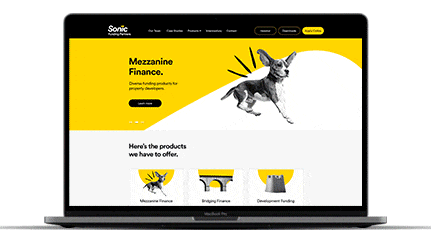Leading Tips for Creating an Impactful Site Style That Transforms
In today's electronic landscape, the significance of an impactful website style can not be overemphasized, particularly when it involves transforming site visitors into consumers. To attain this, one must think about a range of aspects, consisting of comprehending the target audience, focusing on individual experience, and optimizing for mobile platforms. The strategic use of engaging call-to-actions and a distinct visual pecking order plays an important function in directing users through their trip. As we discover these necessary aspects, it ends up being apparent that the success of your site hinges on greater than simply aesthetics; it requires a thoughtful method to style and functionality.

Understand Your Target Market
Understanding your target market is basic to reliable site design, as it prepares for producing an appealing individual experience. Identifying that your users are, including their demographics, choices, and behaviors, allows designers to customize the site's web content, layout, and capability to meet details needs.
Performing thorough market research study is important in this process. Surveys, meetings, and analytics can offer beneficial insights right into user expectations and discomfort points. By compiling this data, developers can create individual characters that represent various sectors of the audience, making certain that design choices are informed and appropriate.
In addition, understanding the target audience aids in selecting ideal design elements such as shade systems, typography, and images that resonate with individuals. An internet site that speaks straight to its target market fosters a sense of connection and trust, encouraging longer brows through and greater conversion rates.
Eventually, a user-centered technique to internet site style not only enhances individual contentment but additionally supports company goals by driving interaction and loyalty. By focusing on the requirements and choices of the target market, a web site can effectively serve its purpose and achieve desired outcomes.
Prioritize User Experience
To enhance the overall effectiveness of a site, prioritizing individual experience (UX) is necessary (Website Design). A properly designed UX makes certain that site visitors can browse the site effortlessly, discover info promptly, and involve with material meaningfully. This causes boosted individual contentment and greater conversion rates
Begin by executing user-friendly navigation. Menus must be rationally structured, enabling users to locate vital locations of the site with minimal initiative. Consistency in layout aspects, such as color plans and fonts, fosters knowledge, which is crucial for keeping customer engagement.
Additionally, take into consideration the packing rate of your site. A hold-up of just a couple of secs can bring about considerable drop-offs, as individuals are much less most likely to wait for a slow-loading web page. Enhancing images and optimizing code can enhance performance and maintain site visitors.
Furthermore, clarity in material presentation is important. Usage concise, appealing language and break up message with visuals to improve readability. By focusing on customer experience, you not only produce an extra enjoyable atmosphere for site visitors however additionally strengthen your brand name's reputation. Ultimately, a concentrate on UX is a financial investment in the lasting success of your website.
Maximize for Mobile Instruments
Maximizing for smart phones is essential in today's electronic landscape, where an enhancing number of customers accessibility internet sites via smart devices and tablets. A mobile-friendly style not only improves user experience but also plays a considerable role in improving internet More Bonuses search engine positions. To accomplish this, it is necessary to take on a responsive design that automatically gets used to numerous display sizes and alignments.

Filling speed is one more important variable; mobile individuals are normally much less individual and expect quick accessibility to details. official site By focusing on mobile optimization, you make certain that your site remains affordable and successfully involves a broader audience.
Usage Engaging Call-to-Actions
A website's effectiveness commonly rests on its ability to assist site visitors towards wanted actions, making compelling call-to-actions (CTAs) important components of style. CTAs offer as the essential factors that route users to engage with the site, whether that implies purchasing, enrolling in a newsletter, or downloading a resource.
To create reliable CTAs, quality is paramount. Use concise language that plainly connects the activity you desire the individual to take.
Furthermore, consider utilizing directional cues, such as arrowheads or pictures, to direct customers toward these switches. By focusing on these elements, services can substantially boost user engagement, driving conversions and inevitably attaining their website's objectives.
Concentrate On Visual Power Structure
Efficient website style counts heavily on a well-structured aesthetic hierarchy that guides customers with content seamlessly. By organizing components in a manner that prioritizes details, developers can enhance individual experience and facilitate decision-making. This includes utilizing size, shade, comparison, and spacing strategically to accentuate the most important parts of a website.
The usage of larger font styles for headings and subheadings develops a clear difference between different areas, permitting users to scan content easily. In addition, using contrasting colors for buttons and calls-to-action can catch customer focus and encourage interaction. Whitespace is one more crucial component; it avoids clutter and allows customers to concentrate on key messages without disturbances.
Photos and graphics should complement the text while also adhering to the well established power structure, reinforcing the overall message (Website Design). Consistency in design elements, such as color schemes and typography, further strengthens the visual power structure, making navigation intuitive

Conclusion
In conclusion, reliable web site style requires an extensive understanding of the target audience, prioritization of customer experience, and mobile optimization. The strategic usage of engaging call-to-actions and a well-defined visual hierarchy better improves individual engagement. By applying these concepts, web sites can achieve higher conversion rates, ensuring that layout elements not just draw in visitors yet likewise facilitate smooth navigation and communication. Eventually, a well-executed site design works as an essential element in driving user activities and achieving organization goals.